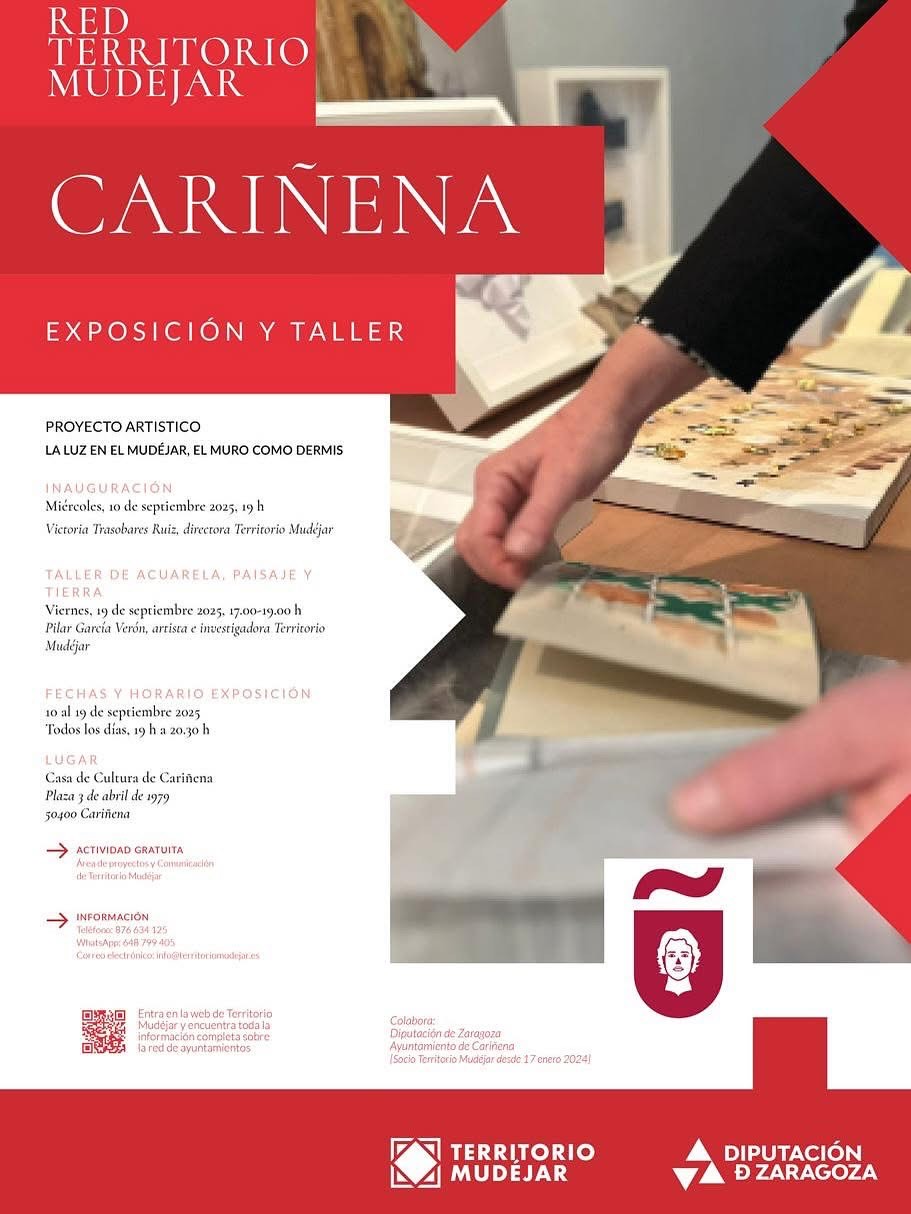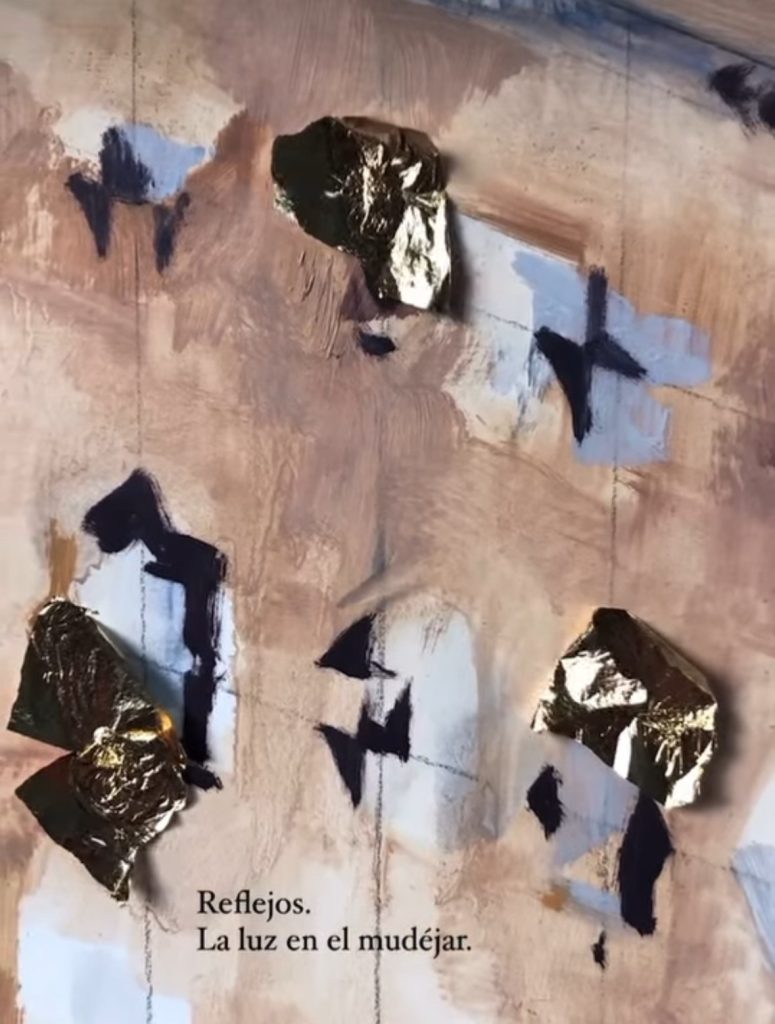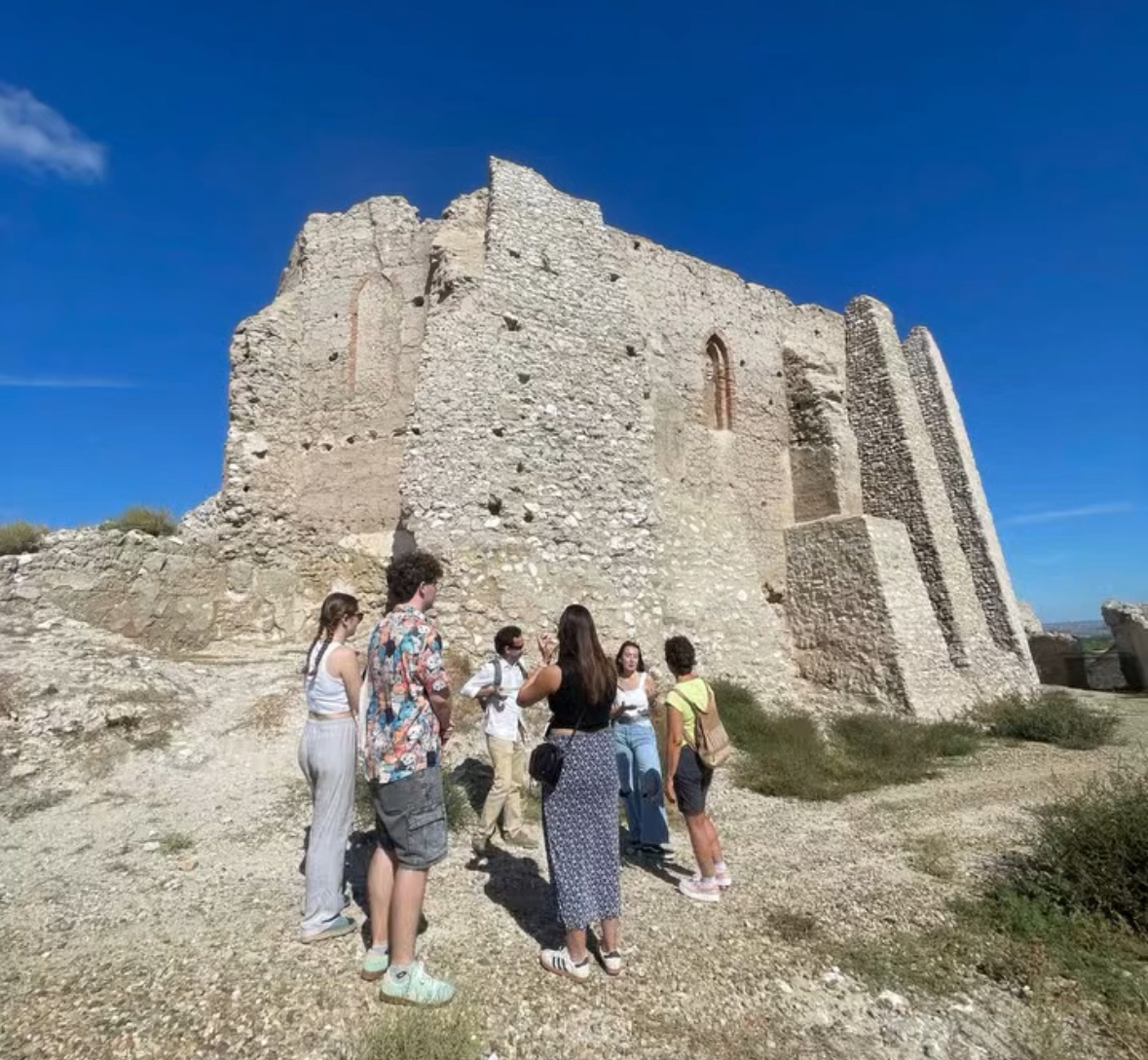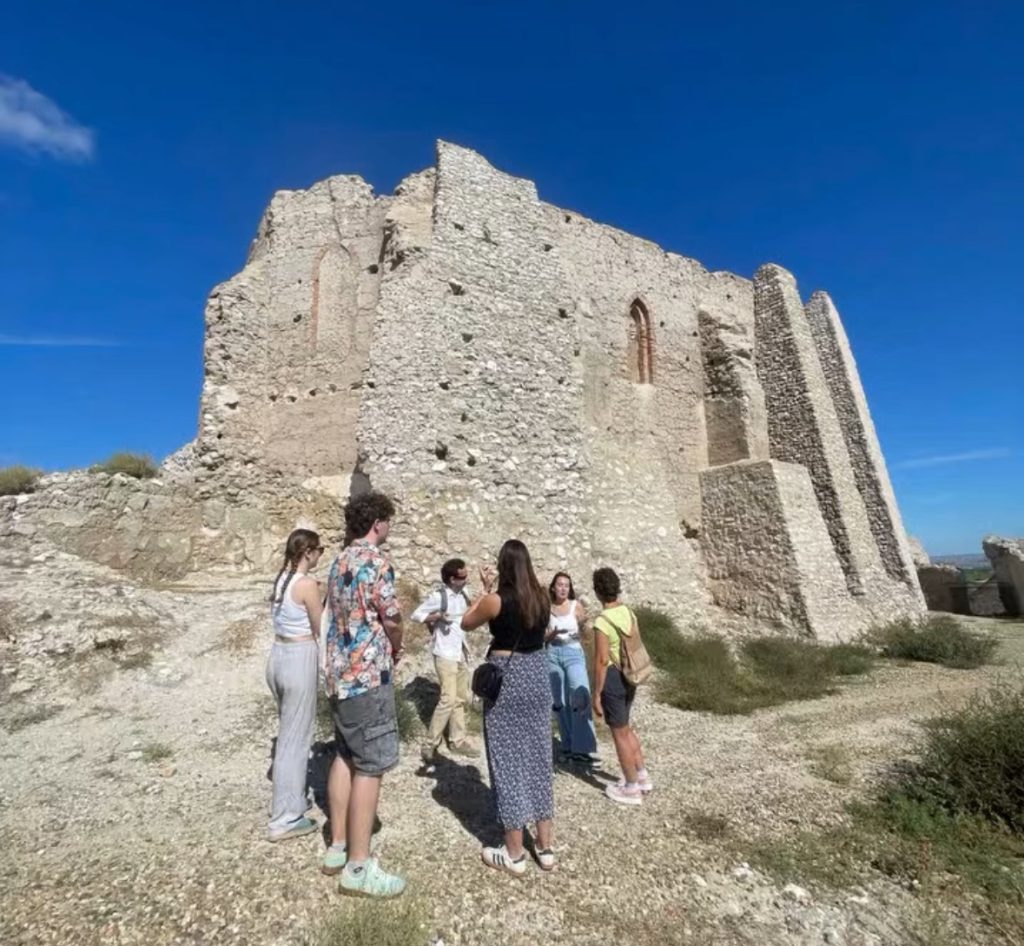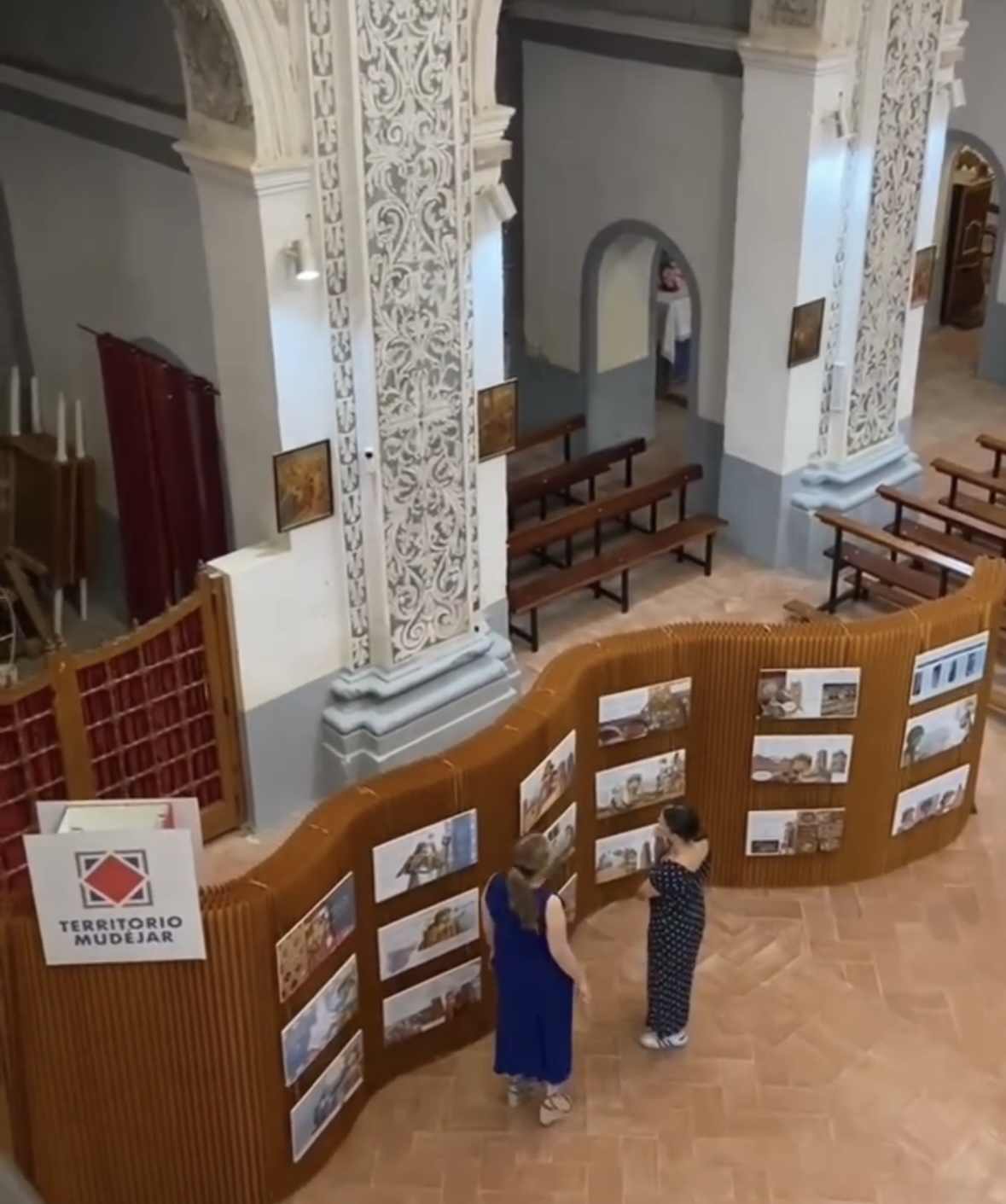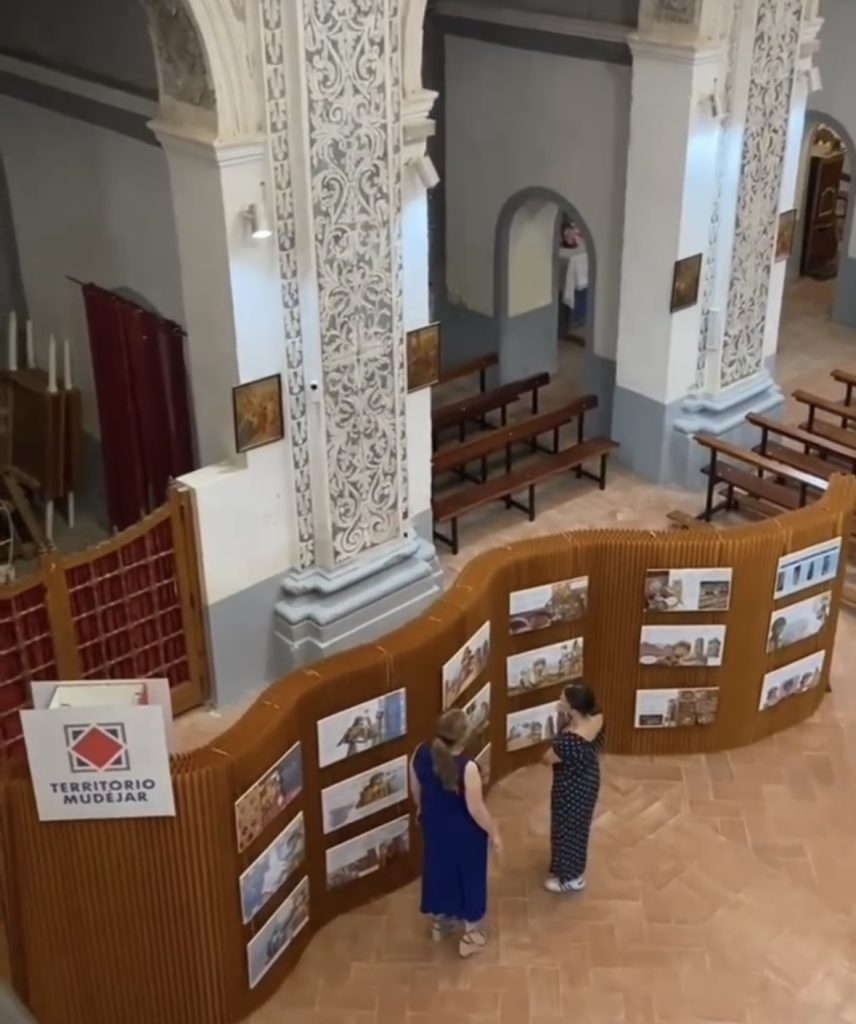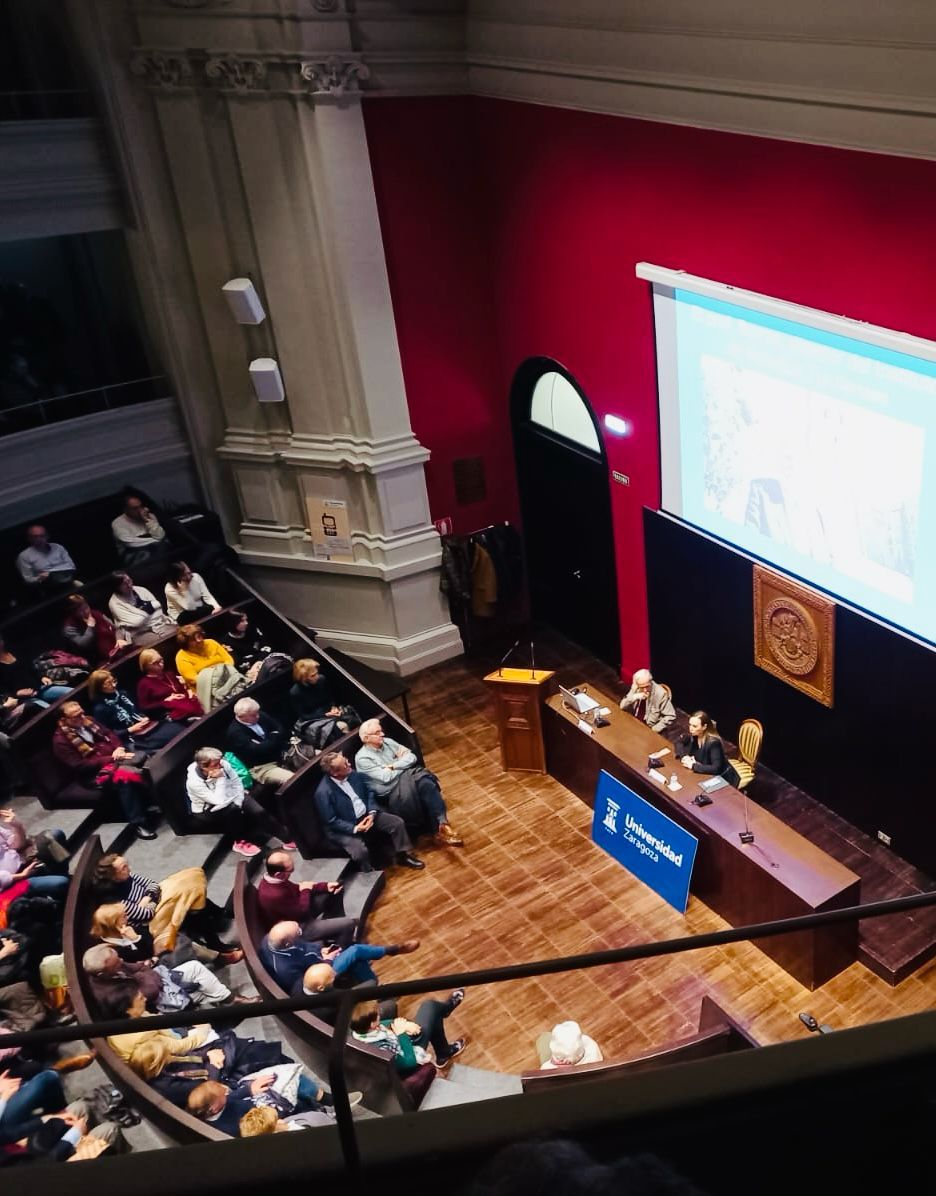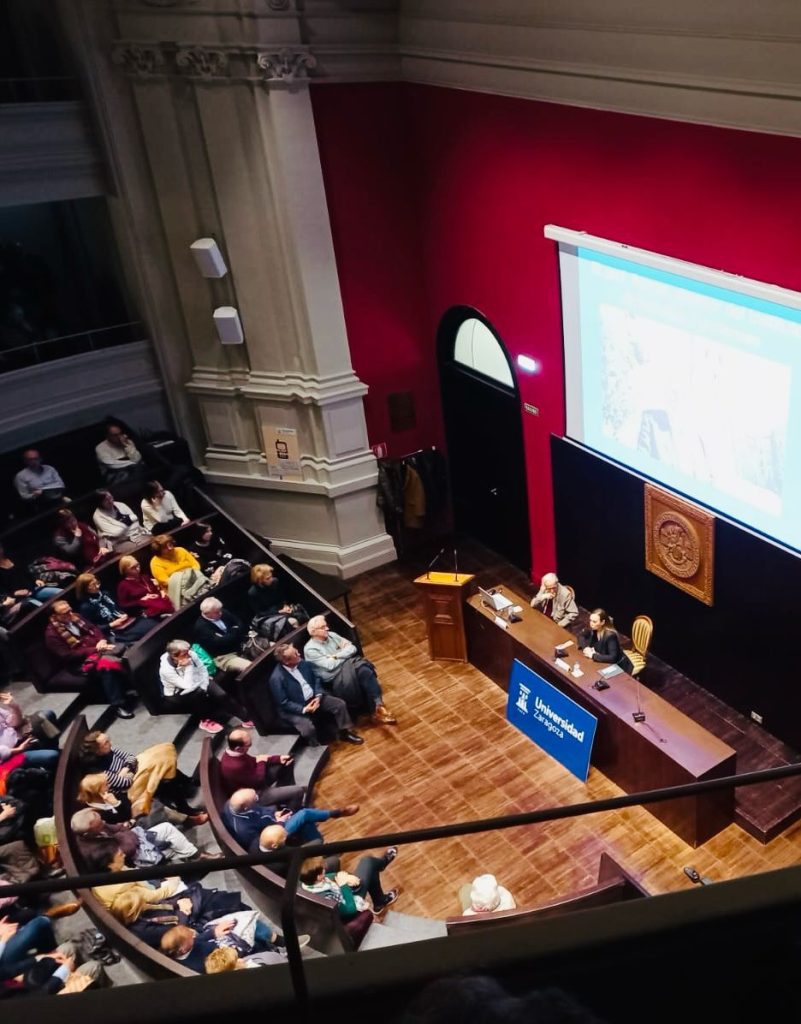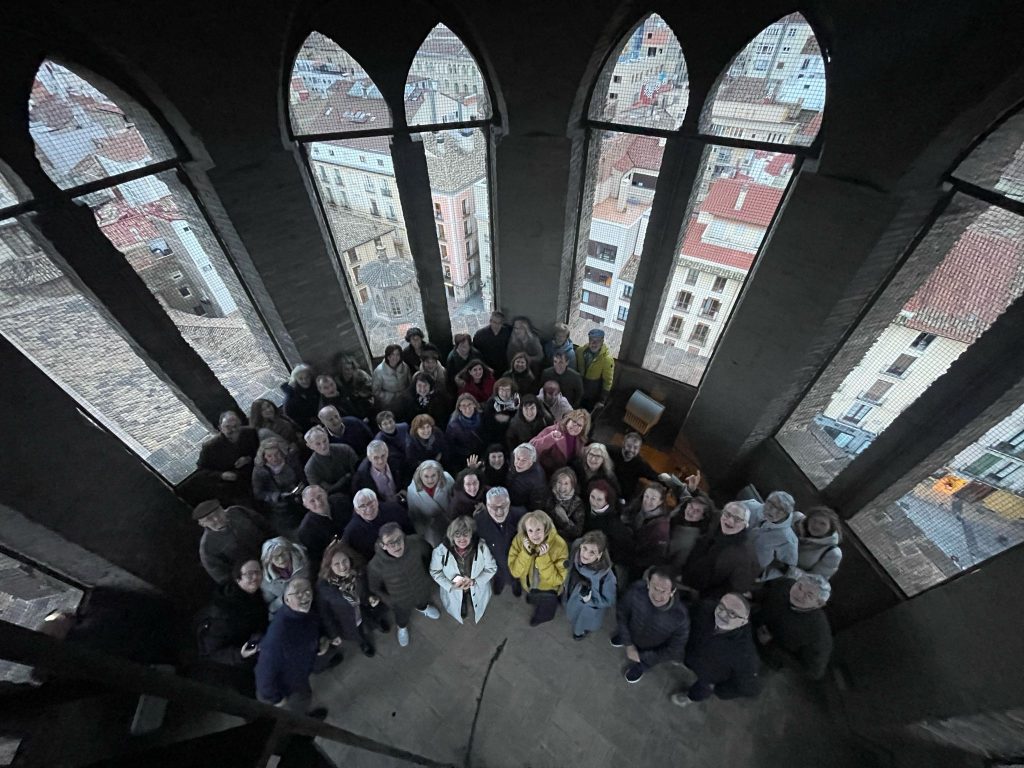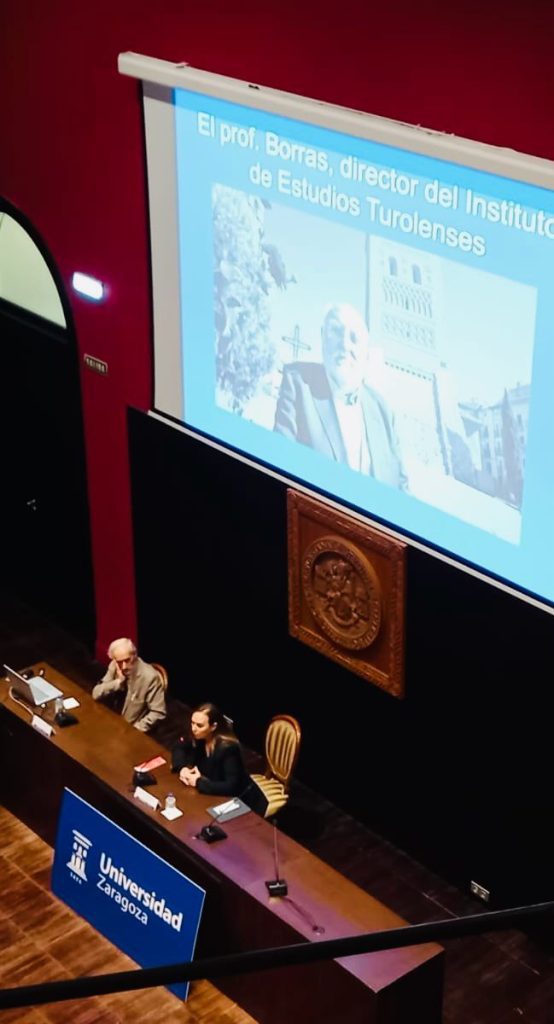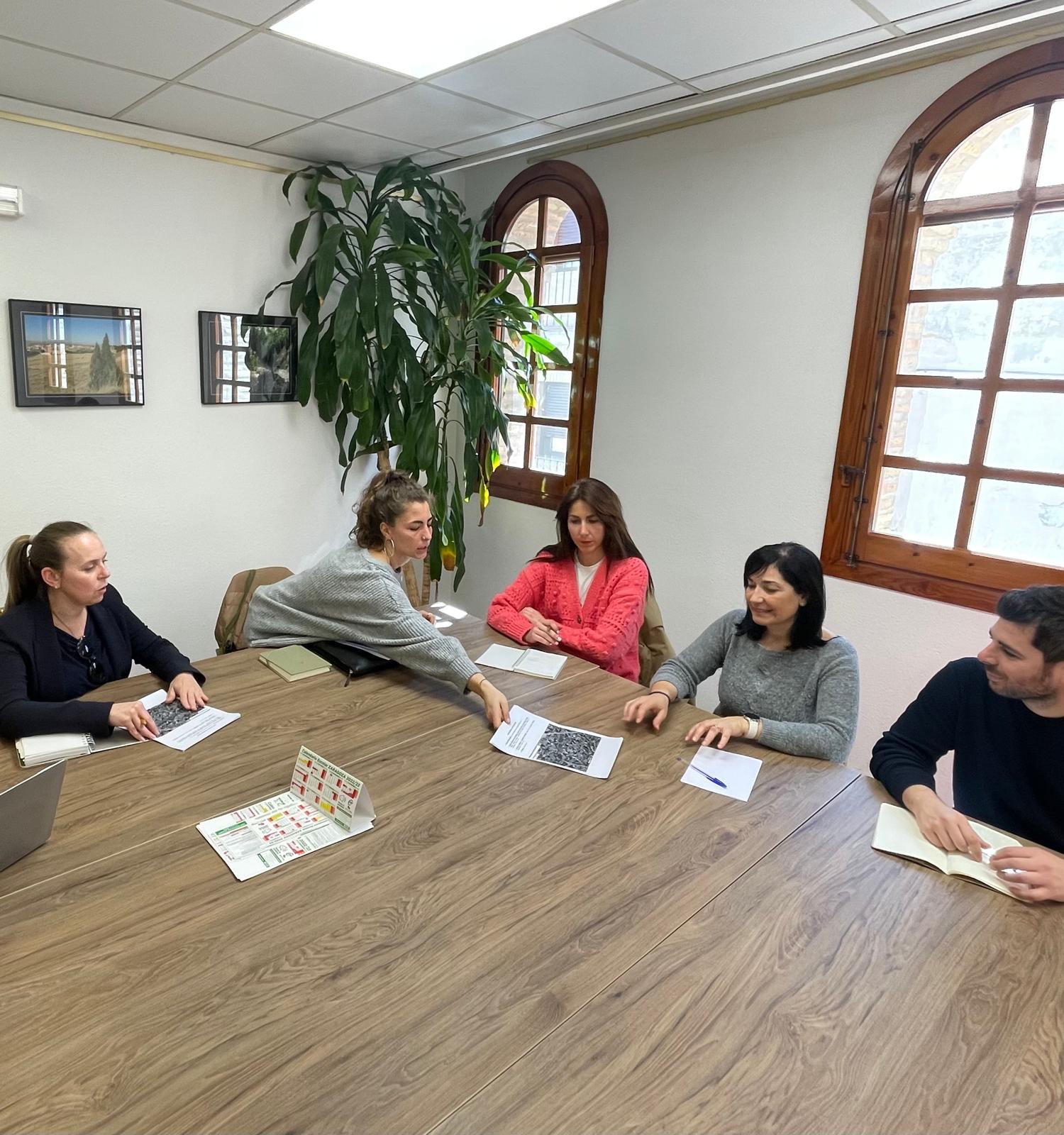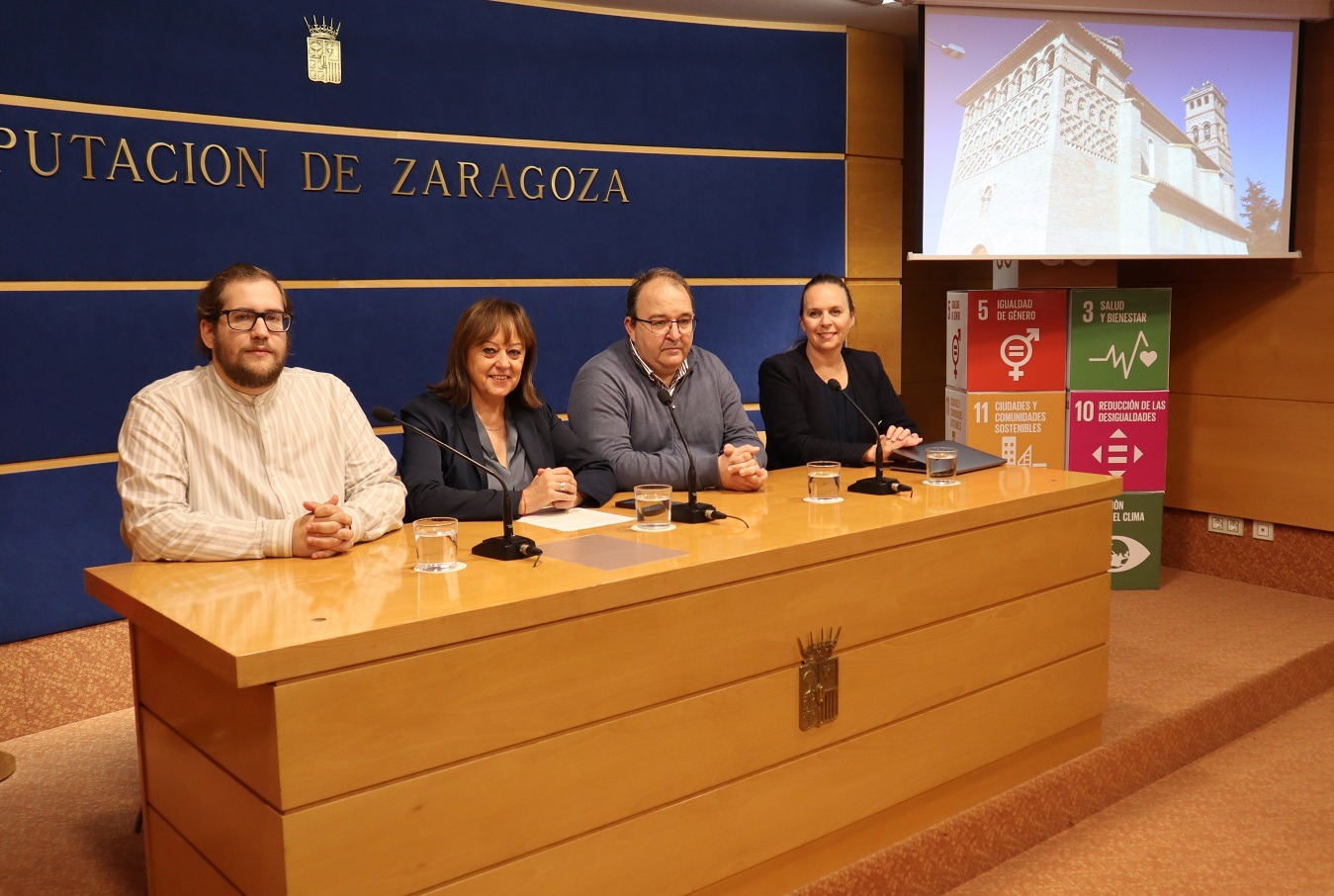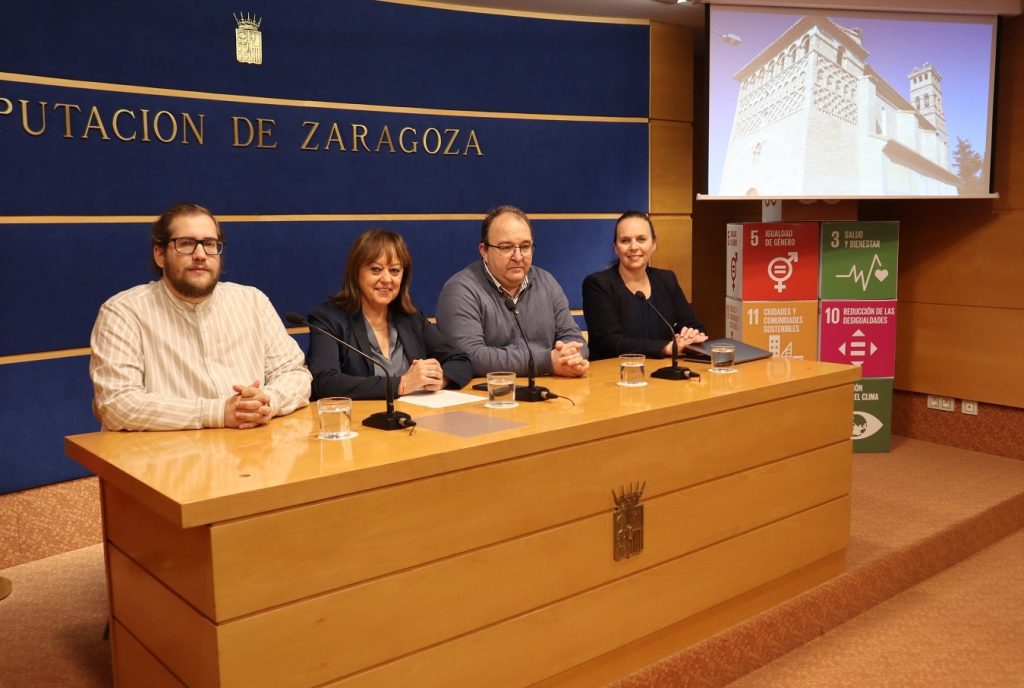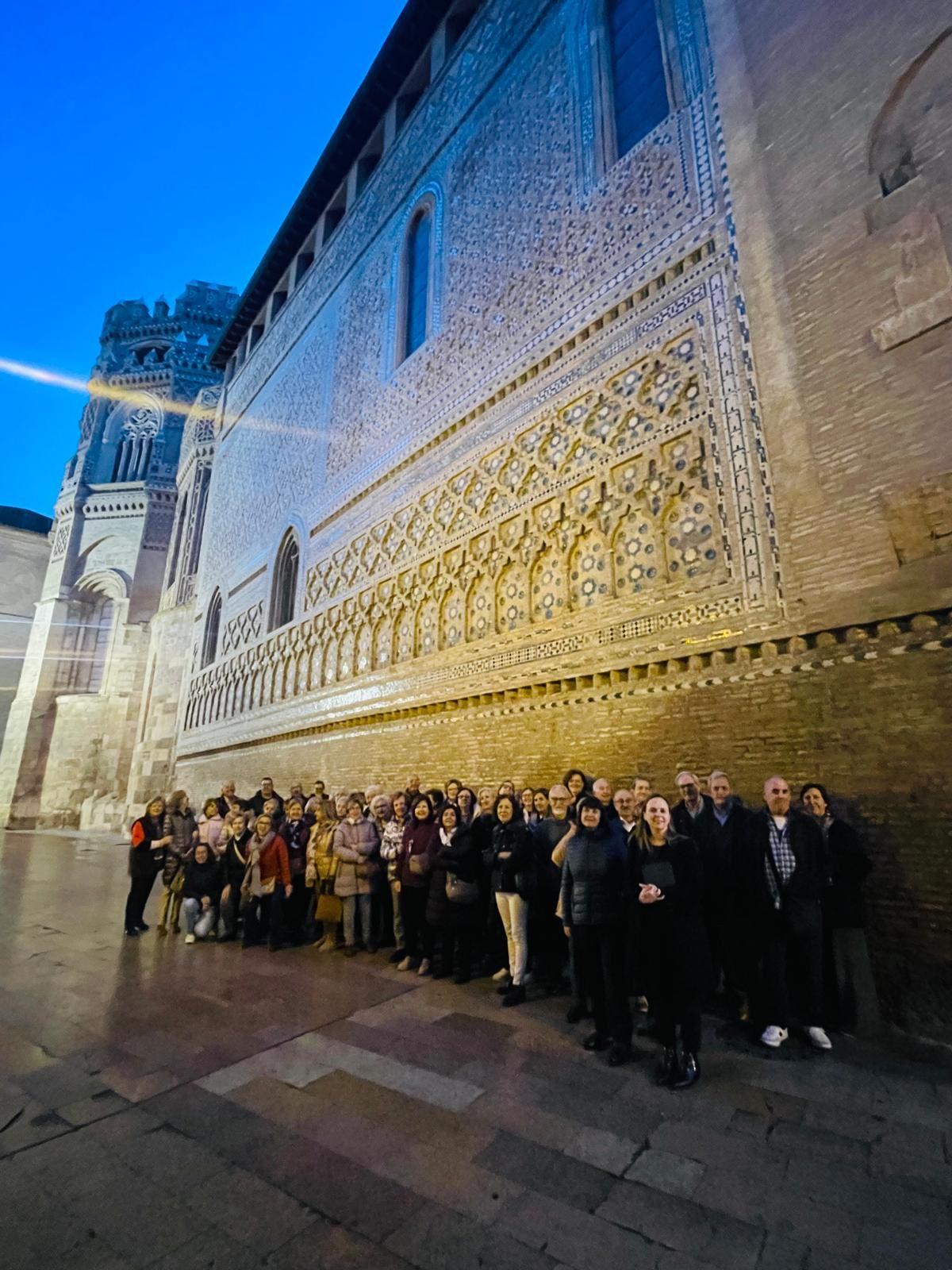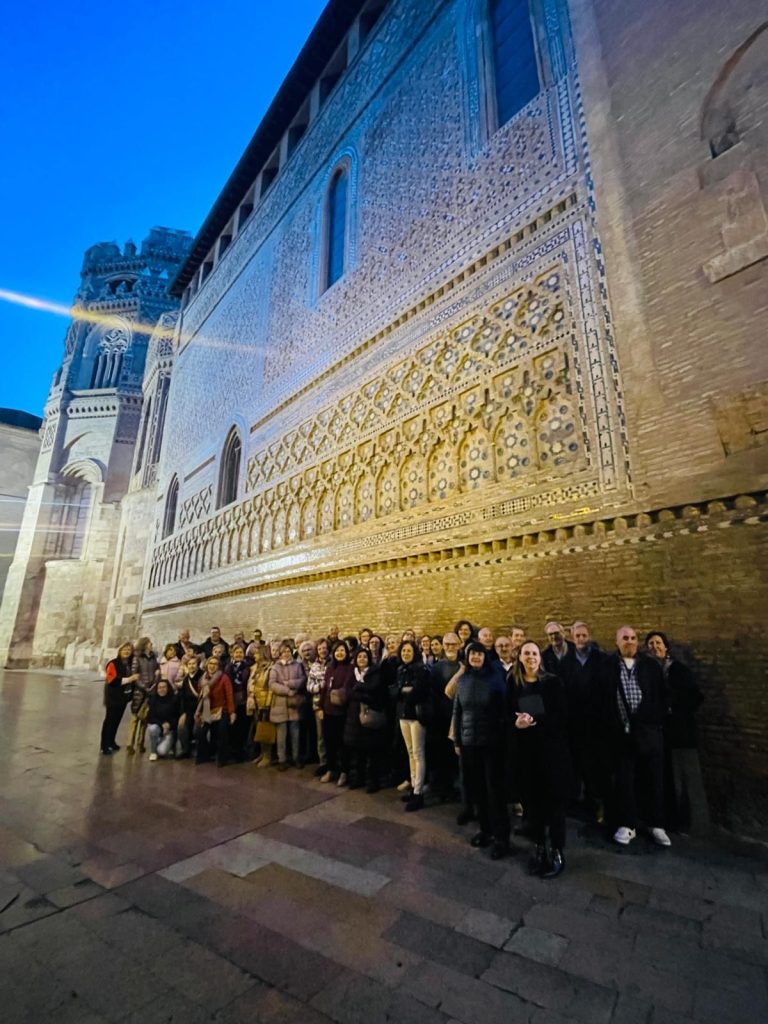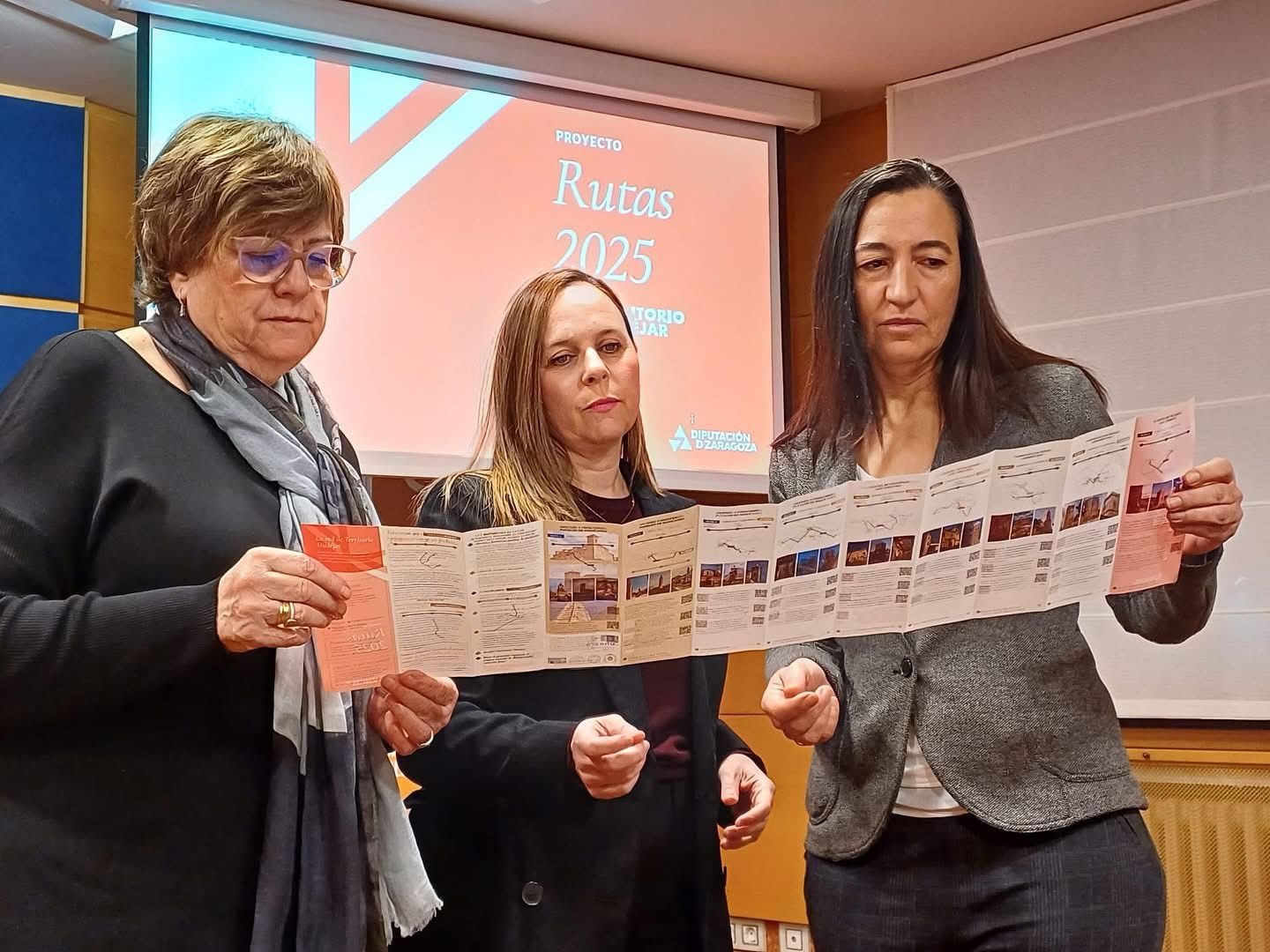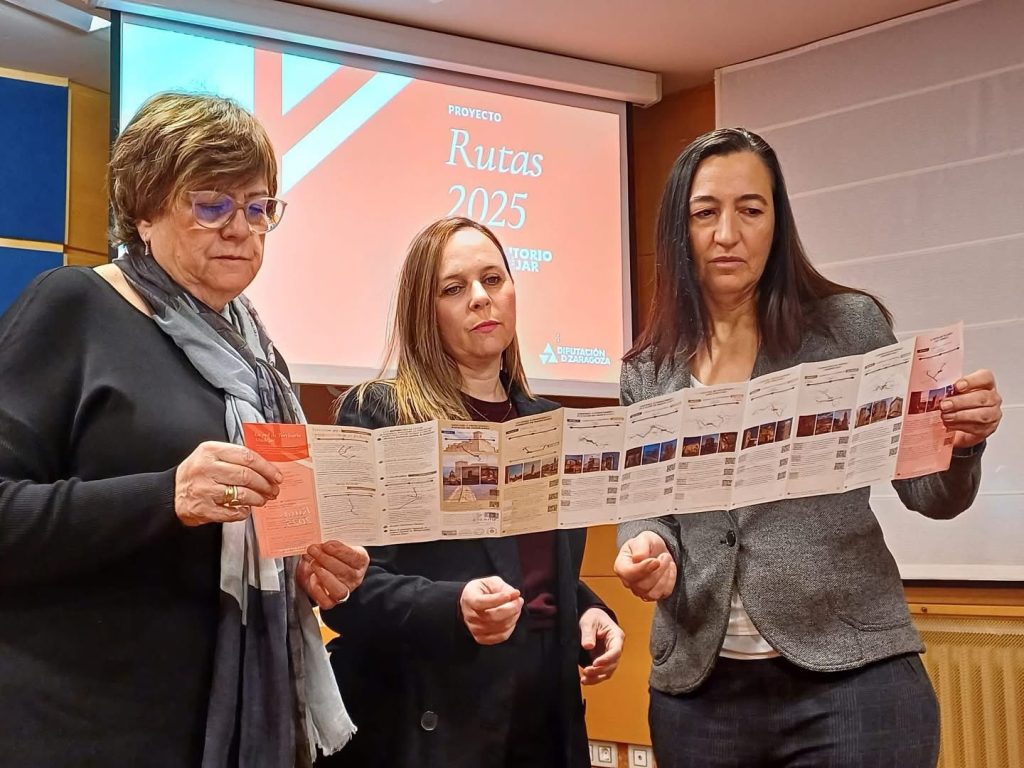Territorio Mudéjar is holding the sixth edition of its Gonzalo M. Borrás Gualis research stays and projects to develop innovative and sustainable proposals on cultural and natural heritage that have a direct impact on the 49 member towns and promote their visibility and awareness. Those interested can apply for three research stays for projects and one artistic residency and must submit their proposals by 31 October. This year, as a new feature, the grants are being offered in partnership with other entities, such as the parish of La Seo de Zaragoza and the Centro Integral de Desarrollo del Alabastro (Alabaster Development Centre), and with international projects, such as the European ReliHE project, linked to religious heritage in rural areas. This will enrich the study of the management and conservation of Mudejar heritage resources and amplify their impact on the territory.
Specifically, Territorio Mudéjar will award three research grants for projects, each worth a maximum of €7,500. As highlighted by Charo Lázaro, the Provincial Council of Zaragoza’s representative for Culture, these grants are awarded for projects and artistic residencies aimed at “studying, raising awareness and carrying out real projects through the heritage of our rural environment”. The aim, explained Lázaro, is to develop “innovative and sustainable proposals on cultural and natural heritage that have a direct impact on the 49 member villages of Territorio Mudéjar and promote their visibility and awareness”.
Proposals must include a physical stay in one or more partner locations, demonstrate a direct impact on at least three of them, and provide evidence of the influence of this impact on the rest of the territory. “They seek to attract networks of professionals who work directly from the locations, drawing on their life experience in the villages of Territorio Mudéjar, rather than remaining at a theoretical level,” emphasised Victoria Trasobares, director of the Territorio Mudéjar association.
The modalities that can be applied for are:
1. The uses of heritage: Study, diagnosis and pilot cases in the villages of Territorio Mudéjar. This stay is being carried out in collaboration with the European project Religious Heritage in Rural Areas (ReliHE) led by the Polytechnic University of Turin, in which Territorio Mudéjar is a stakeholder through the Provincial Council of Zaragoza as a partner in the project. The scholarship is intended to study, diagnose and propose pilot cases on the historical uses of religious heritage in Territorio Mudéjar and its current state, as well as to explore the strategic role of this heritage in rural environments. Among other things, the research will result in a methodological guide for the possible and sustainable long-term uses of these assets.
“This initiative capitalises on the exchange of experiences and best practices among the international partners participating in REliHE and opens up new avenues of work to address the urgent challenge of rethinking our rural religious heritage,” explains Irene Ruiz, coordinator of the REliHE project.
2. Models for managing monuments and their surroundings from the perspective of authenticity and preventive conservation: Study, diagnosis and case studies. In partnership with the Parish Church of La Seo, Cathedral of El Salvador in Zaragoza the scholarship will be used to develop a series of proposals for the area known as Parroquieta de La Seo, a UNESCO World Heritage Site, and at least two other buildings in the villages of Territorio Mudéjar, proposing preventive conservation measures for the selected properties and their protected surroundings, proposing actions to improve their preventive conservation, and developing pilot actions to enhance the uses of the spaces and their territorial integration. The methodology obtained from this stay should be applicable to other properties in Territorio Mudéjar. The Archbishopric of Zaragoza, to whose diocese more than half of the parishes in the villages of the Mudejar Territory belong, has been an honorary member of the association since its foundation on 13 September 2018.
“The Archbishopric of Zaragoza has a close relationship with Territorio Mudéjar, having been an honorary member since 2018. But we are also united by our work to promote heritage, especially with La Parroquieta. This stay strengthens those ties in an innovative way and will allow us to transfer the results to other monuments in the partner towns of Territorio Mudéjar,” said Daniel Granada, chapter secretary of La Seo, Cathedral of El Salvador.
3. Study of alabaster gypsum and its impact on the territory in collaboration with the Comprehensive Alabaster Development Centre (CIDA). Plaster, as a fundamental material for understanding Mudejar architecture, has been the focus of previous Territorio Mudéjar exhibitions, and now, further study is being sought through a collaboration with CIDA, based in Albalate del Arzobispo. This alliance is essential due to the location of historical and current alabaster deposits in towns within the Territorio Mudéjar area and the links with companies that extract and process the product, located in or very close to the partner towns. Among other things, this grant aims to promote a study of the possibilities of this plaster and the actual implementation of traditional kilns.
Furthermore, as Santiago Martínez, coordinator of CIDA (Comprehensive Centre for Alabaster Development), points out, this initiative “opens up new avenues of research into one of the main by-products of alabaster, alabaster gypsum, and will enable the implementation of previously unexplored research programmes on alabaster gypsum at the Comprehensive Centre for Alabaster Development”.
On the other hand, Territorio Mudéjar continues to strive to become a creative laboratory and is organising an artistic residency linked to the territory and cultural landscape. Specifically, it will address the wine landscape, taking advantage of Cariñena’s selection as European City of Wine in 2025 and the fact that the villages of Territorio Mudéjar belong to three designations of origin. The residency is endowed with €4,500 and proposals may be submitted until 31 October 2025.
In this regard, the mayor of Cariñena, Sergio Ortiz, emphasises that “the interaction between man and nature throughout history to create a wine industry has shaped a unique landscape that deserves to be cared for and promoted. This residence is a great opportunity for leading artists to get to know and work in our region and join forces with our bid to become a European city of wine, but above all, to promote our rich heritage”.
Applications must be sent to the Asociación Territorio Mudéjar in digital format to the email address convocatoria@territoriomudejar.es. The terms and conditions of the call for applications and further information can be found at https://www.territoriomudejar.es/estancias-de-investigacion/.
Activities and events promoting the call for applications
Schedule to be confirmed: Visits to heritage sites in the villages of the Mudéjar Territory for assessment as case studies.
17 September [10:00 a.m. – 2:30 p.m.]: Tarazona. Convent of San Joaquín Project meeting REliHE. Religious Heritage in Rural Areas . Participation alongside entities related to the project. Organised and coordinated by the Provincial Council of Zaragoza and the Tarazona Monumental Foundation.
19 September [5pm – 7pm]: Cariñena. Casa de Cultura. Closing of the exhibition Proyectos Territorio Mudéjar (Mudejar Territory Projects) and introductory watercolour workshop based on observing the landscape with artist and researcher Pilar García Verón.
25 September. [12:00 p.m. – 12:30 p.m.]. La Almunia de Doña Godina. San Juan Palace. Opening and presentation of the exhibition “Territorio Mudéjar La Guía” (Mudejar Territory La Guía). This project is the result of the 2021 residency programme coordinated by Myriam Monterde and illustrated by artist David Guirao.
30 September [10:00–11:00]. Albalate del Arzobispo Castle. Alabaster Development Centre. Presentation: Key points for applying for the call for proposals. Webinar broadcast live from a heritage site. Open to the public in person
14 October [10:00–11:00]. Location to be determined. Presentation: Key points for applying for the call for proposals. Webinar broadcast live from a heritage site. Open to the public in person
21 October [10:00–11:00]. Location to be determined. Presentation: Key points for applying for the call for proposals. Webinar broadcast live from a heritage site. Open to the public in person.

